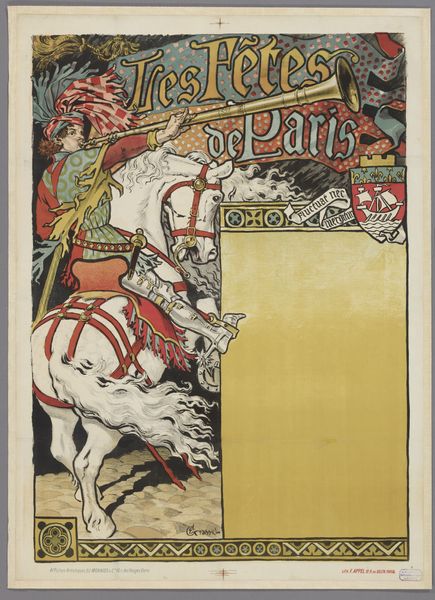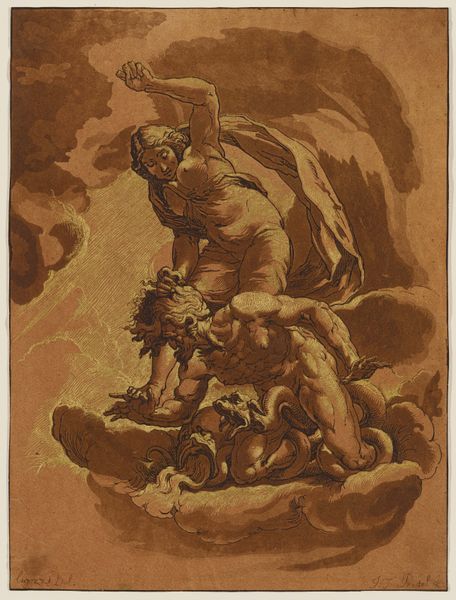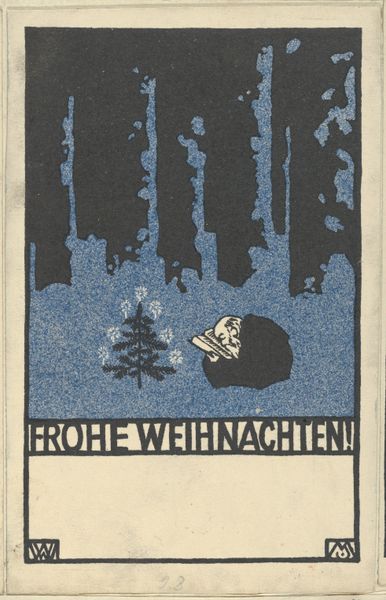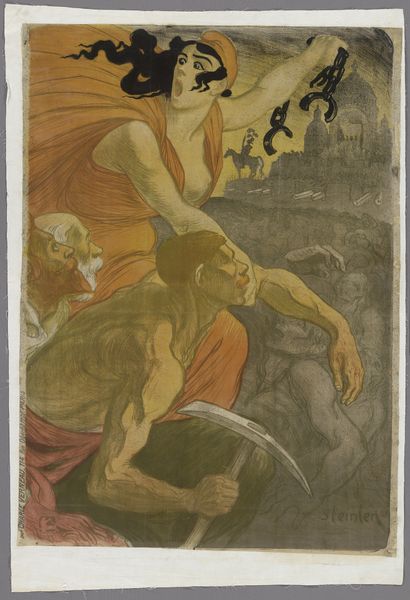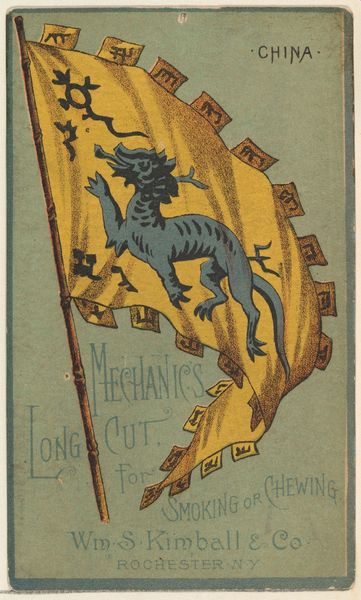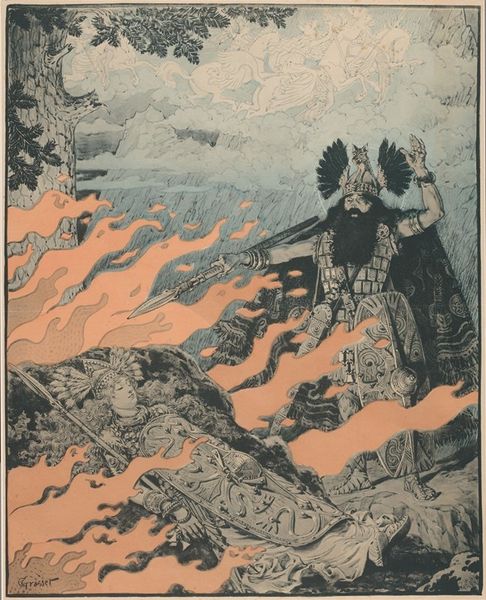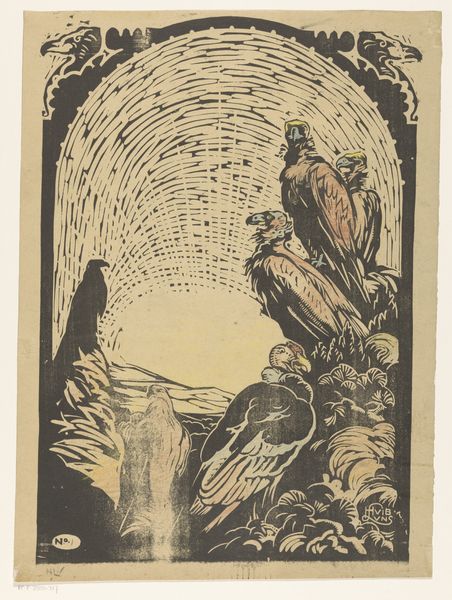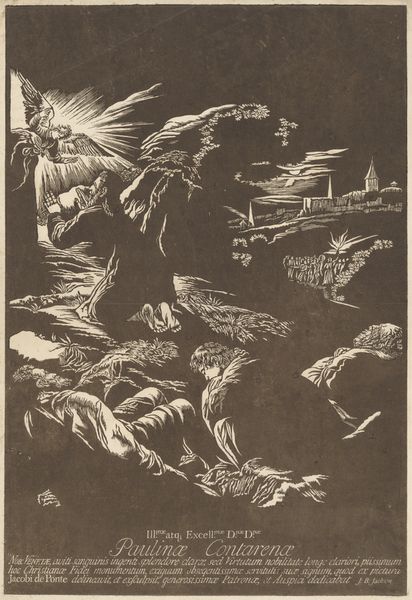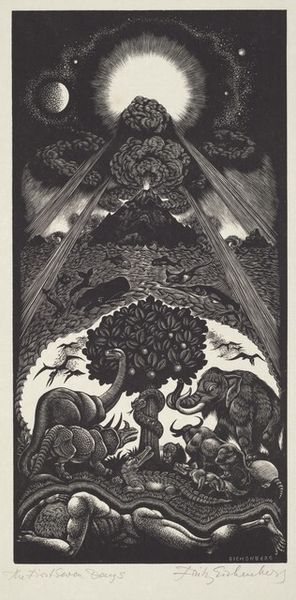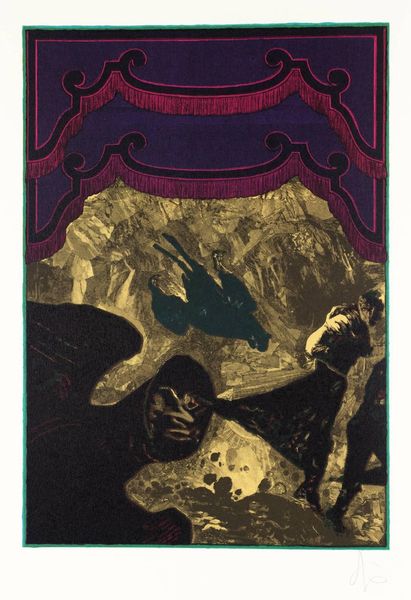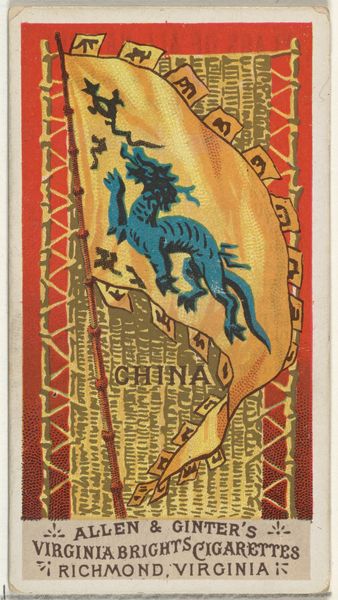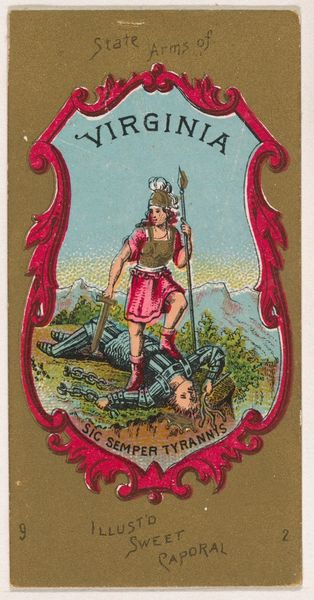
Affiche ter gelegenheid van het honderdjarig jubilieum van de publicatie van De Leeuw van Vlaanderen door Henri Conscience 1938
0:00
0:00
Dimensions: height 990 mm, width 610 mm
Copyright: Rijks Museum: Open Domain
Curator: Before us, we have a poster created in 1938 on the occasion of the centennial of Henri Conscience’s novel, "The Lion of Flanders". Editor: My first impression is one of slightly unnerving power. The dark lion set against that radiant background seems almost to vibrate with suppressed energy. It's visually quite forceful, don’t you think? Curator: Absolutely. Formally, the artist has established a clear visual hierarchy, focusing on the lion figure. The contrast between the dark fur and light rays create depth, while the overall composition centers on the lion and emphasizes the book clutched tightly. Consider, too, the strategic deployment of color and line to build both texture and symbolic significance. Editor: Well, the lion itself is such a potent image. For the Flemish, it's more than just an animal, right? It's a national symbol embodying strength, pride, and defiance—traits deeply connected to the region’s historical struggles for autonomy. Its tongue protruding so far hints a kind of vulgar or rude character. Curator: Precisely. That’s reinforced by the simplification of the form. We see an Art Nouveau sensibility at play, but simplified for accessibility as popular propaganda. Editor: There’s an intentional visual link being forged back to the literary work itself. Books often function as emblems of culture, knowledge, or even specific ideals. Presenting it almost caged within the paws of the lion transmits this notion of holding onto Flemish ideals of Conscience. The text at the top makes explicit its relationship as an advertizement for a centennial celebration. Curator: Indeed, a strategic blend of form and content that renders the lion emblematic of cultural resilience in a time of building political tension across Europe. The poster acts as a reminder of cultural heritage in a quickly changing world. Editor: It serves as an excellent case study for visual propaganda during an era marked by rising nationalism. So much more than simple advertising. Curator: I agree; a testament to how symbolic forms persist and are re-purposed.
Comments
No comments
Be the first to comment and join the conversation on the ultimate creative platform.
